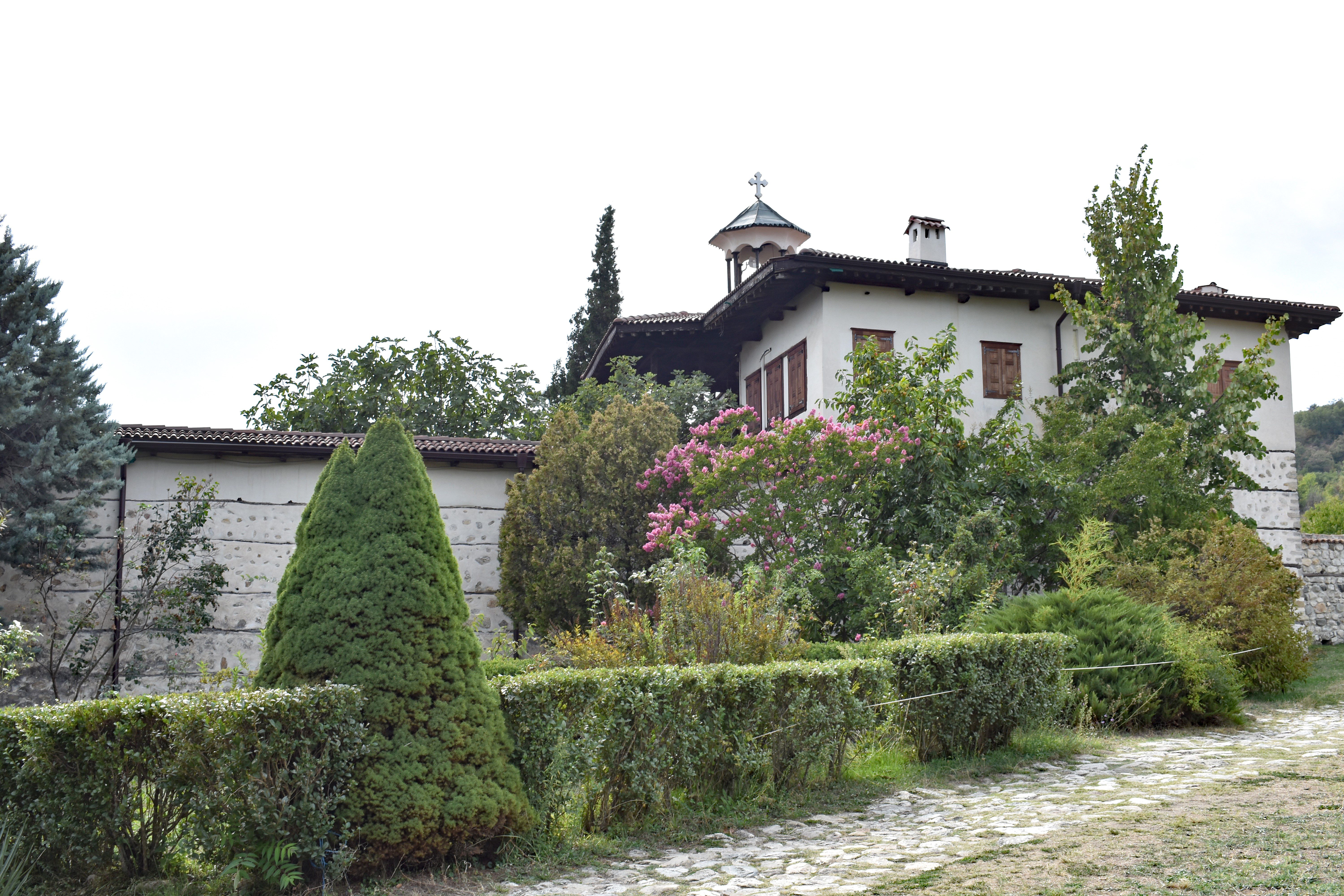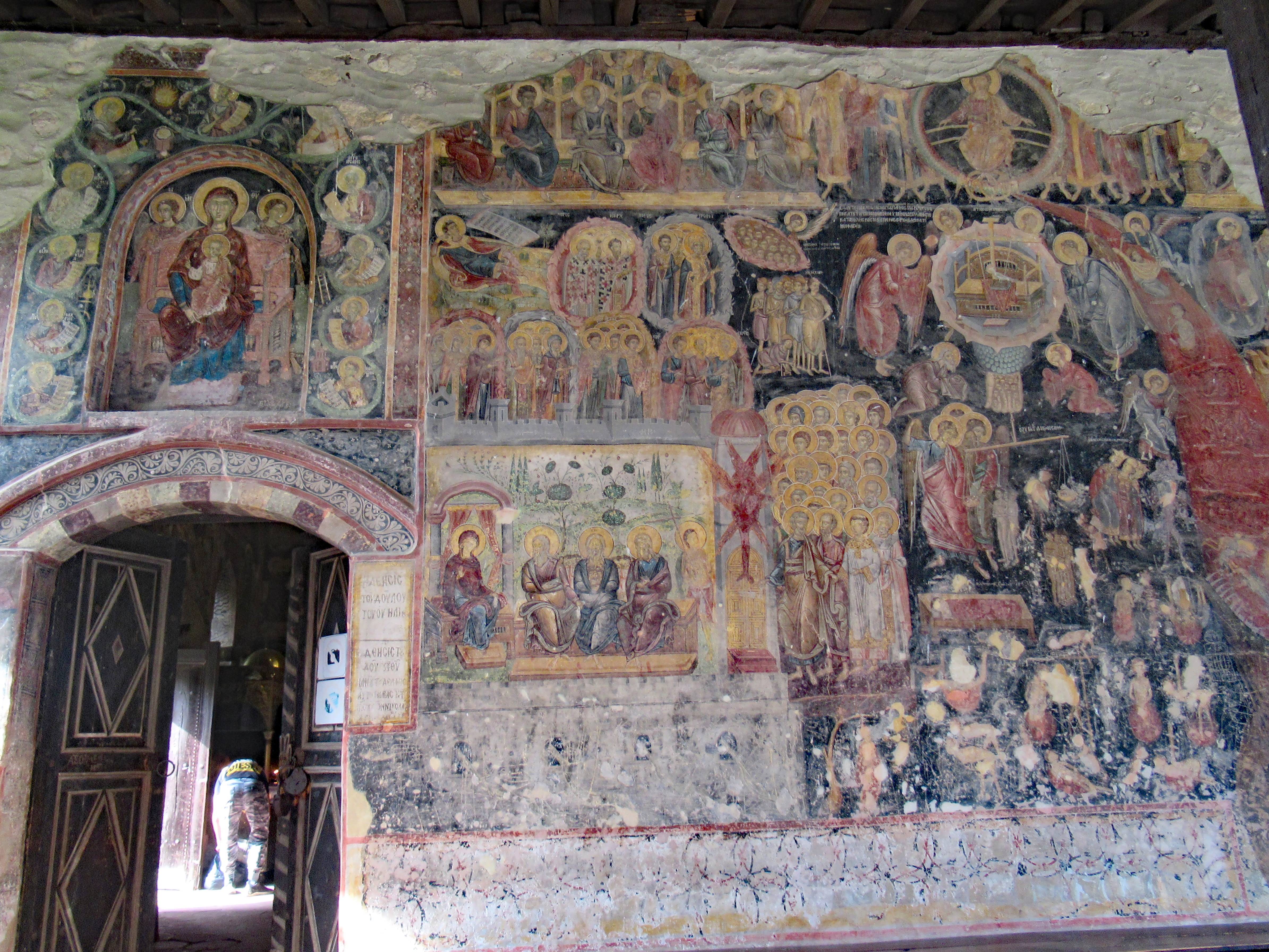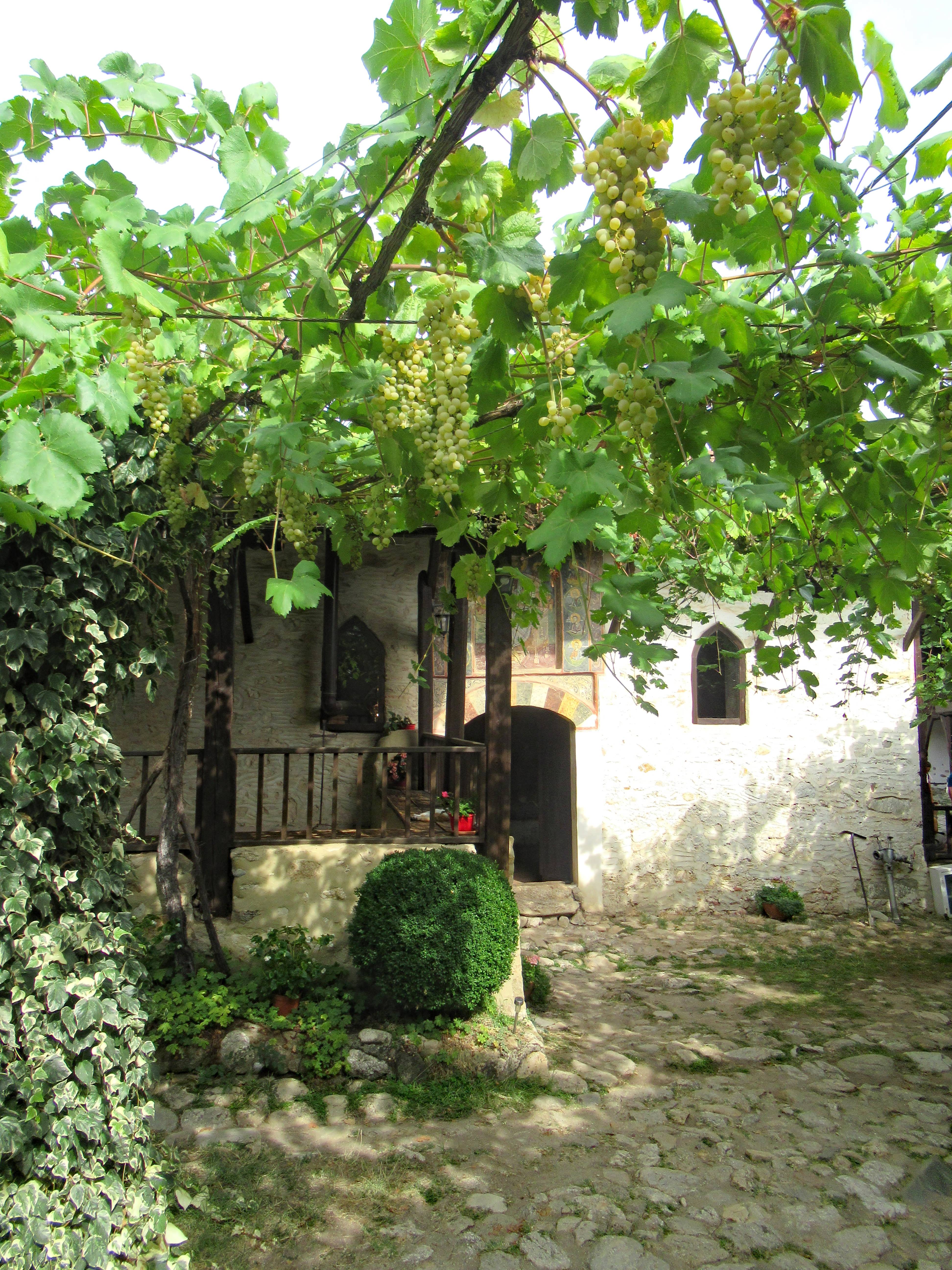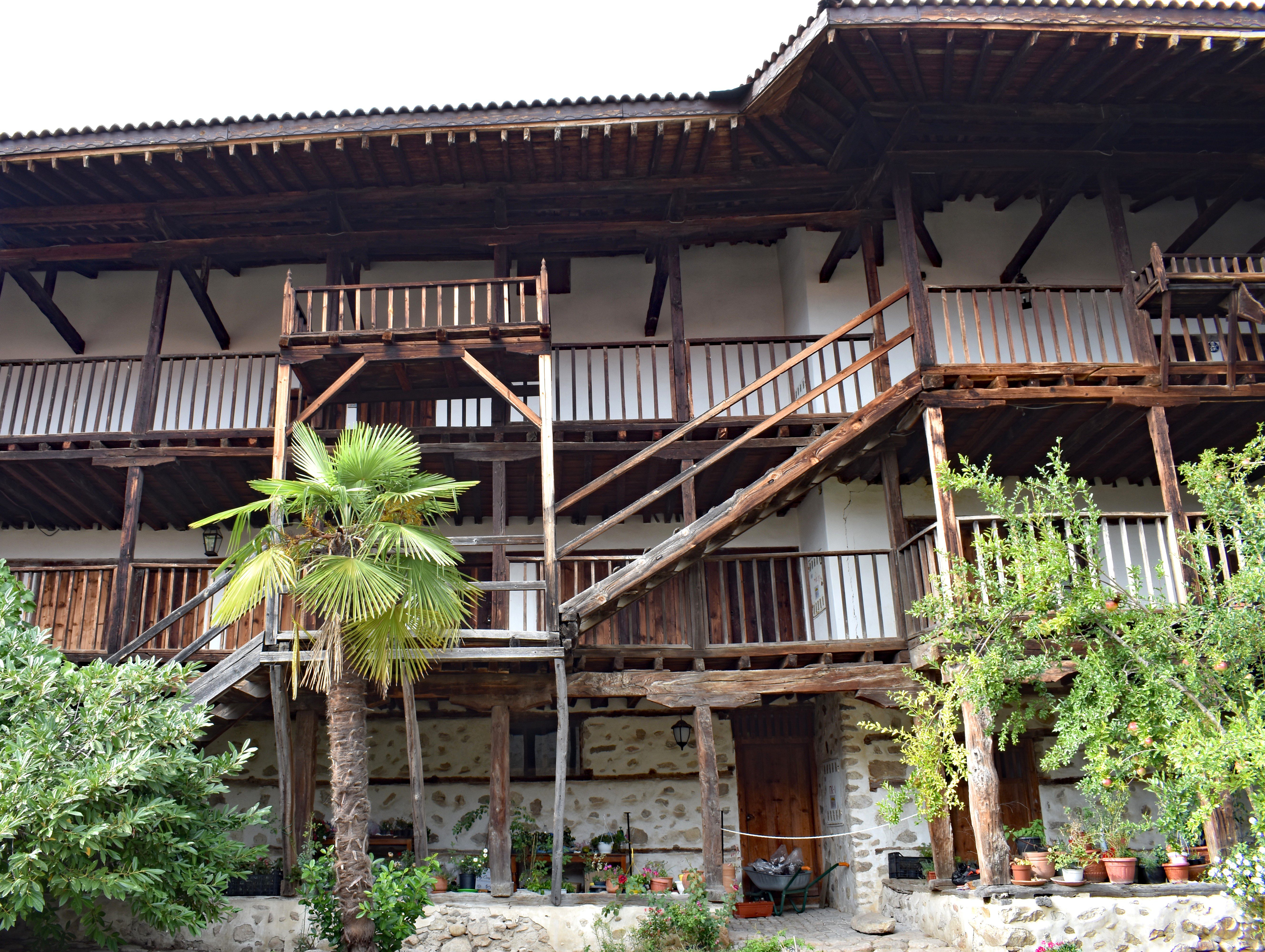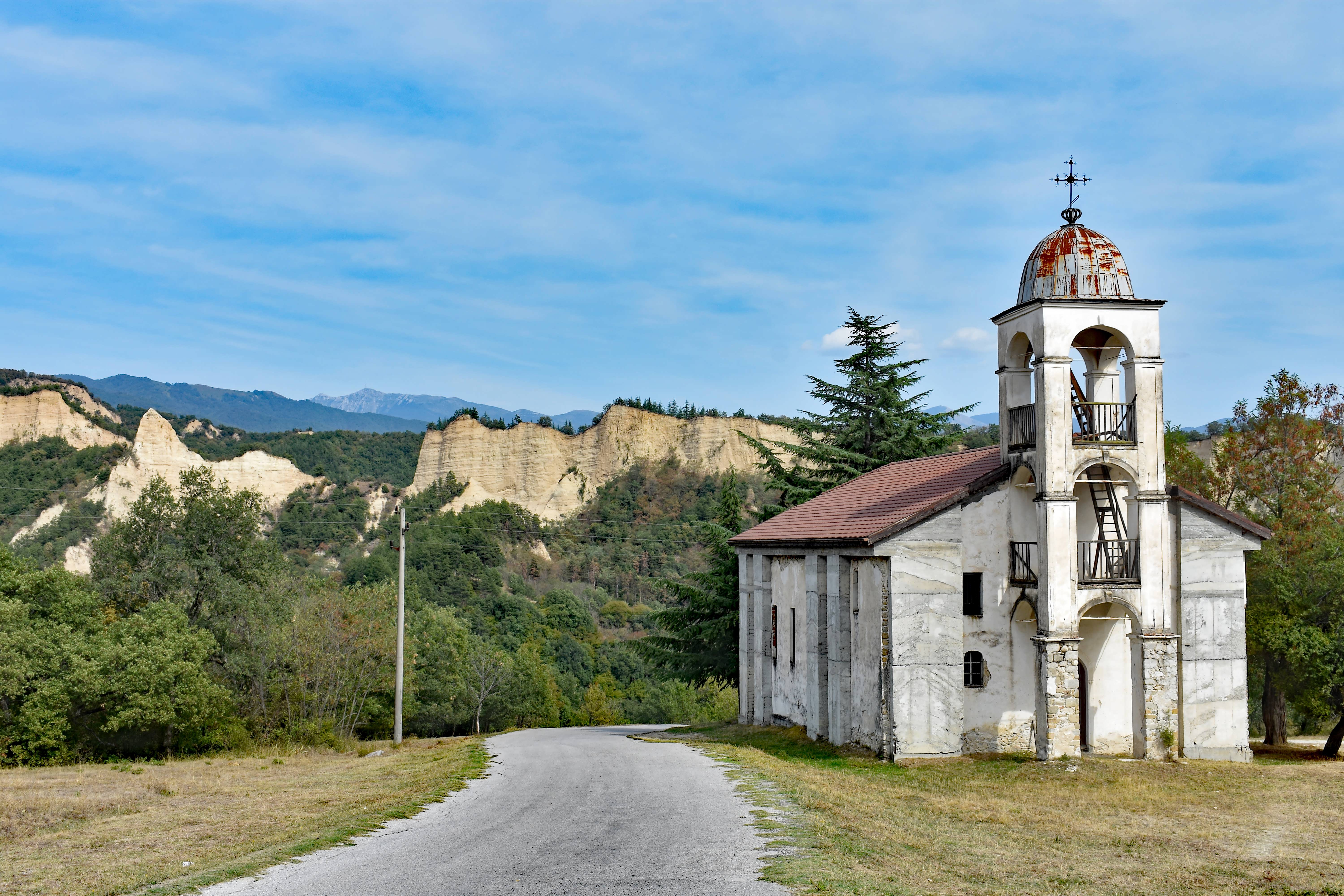Whilst staying at the very quirky Family Hotel Dinchova Kushta (see separate review), we visited the Rozhen Monastery of the Saint Nativity of Mother of God. It is not only the biggest monastery in the Pirin Mountains in southwestern Bulgaria, but having being built in 1220, it is one of the country’s oldest Medieval monasteries.
From the village of Rozhen, a signpost outlined two options: a 10-minute walk up rather precarious looking steps or 1.5km by road. We opted for what appeared to be the safer option, and although the road was steep with hairpin bends, it took only around 30 minutes of puffing and panting with stops along the way for views back into small village of Rozhen and the ‘Rozhen Pyramids’. These are part of the Melnik Pyramids complex and consist of hundreds of small and large rock mushrooms which formed at the place of a dried up lake.
As we were nearing the monastery’s closing time of 5pm, we continued past an interesting looking church and onwards through the monastery’s car park.
It was a total contrast to Rila Monastery which we’d visited in the morning, but we preferred its low-key more peaceful surroundings. A courtyard surrounded by tiers of rooms for the monks had wooden balconies, and there were stone walls, a fresh mineral spring and laden trailing grape vines. The frescoes inside were older and less vibrant than Rila and with the help of a friendly monk, I found the church’s most treasured icon of the Holy Virgin Portaitissa: as it was near the entrance and adorned with a white floral border, it was probably an obvious question. According to legend, a widow from Nikea thew the icon into the sea to save it from Teofil, the Byzantine emperor. It then floated many years to the Greek shore and in 999 reached the gates of the Iviron Monastery on Mount Athos. Above the door, and on the outside where photographs were allowed, was amongst others, a fresco of Jesus and the 12 disciples.
On our return, we stopped to photograph the closed church of Saints Cyril and Methodius built in 1914. Outside was the grave of a Macedonian freedom fighter Yane Sandanski who was killed on 21 April 1915 in Pirin. His tombstone was inscribed in Cyrillic but translates as “To live is to fight. The slave – for freedom, the free man – for excellence”.
